This article is part of FT Globetrotter’s guide to New York
New York is a city of restaurant rebirth. For better or worse, establishments open and close as trends, populations, and generations change. Italian red sauce joints get lost. Korean fine dining grows. Sometimes it all comes full circle: I’ve watched as old-school diners disappeared, replaced by brunch spots, which then mostly died, replaced by nouveau diners once again (though the new ones serve matcha porridge and martinis). Like the phases of the moon, the city’s dining trends wax and wane.
This renaissance has now reached the world of Chinese restaurants, which has long been a backbone of New York City cuisine. Its beating heart was always Chinatown, in Lower Manhattan, which has cradled each side of Canal Street since the late 19th century. But many immigrants who originally settled there and opened small lo mein and dumpling houses are ageing and dying, and their children don’t necessarily want to inherit their businesses. Meanwhile, the more liveable neighbourhoods for today’s new wave of Chinese immigrants are in Queens (Flushing) and Brooklyn (Sunset Park). Those once-satellite Chinatowns have now surpassed Manhattan’s in size. Now, if you want the most authentic Chinese food in New York, you go there.
There is, however, a new generation of restaurateurs invested in preserving the old Chinatown and having fun with Chinese-American food. Some are young, Americanised, formally trained and well travelled. Some are the literal kids of Chinatown. Some are from China, bringing us new flavours: experimental Sichuan food, Hakka cuisine or east coast-meets-Hong Kong raw-seafood bars. These restaurants rely on diners’ open-mindedness and broadening palates, many reinventing or playing with American expectations of Chinese food.
Hakka Cuisine
11 DIVISION STreet, NEW YORK, NY 10002
-
Good for: Trying something new, a big group, a long Sunday dinner
-
Not so good for: Cocktails (they have a rotating beer, wine and liquor list, but it’s not their priority), solo dining (you’ll want to order more than you can eat)
-
Prices: Dishes, $9.95–$68.95
-
Opening times: Daily, 11am-10pm
-
FYI: Huge portions
There are about 80 million Hakka people in the world. But in 2022, on Division Street in the heart of lower Chinatown, the very first restaurant dedicated to Hakka food opened in New York City. It’s called Hakka Cuisine. And it’s a delight.
The word Hakka means “guest family”, which succinctly describes the Hakka people, a nomadic ethnic group from northern China who migrated all over east Asia. Historically often marginalised, they have always held their culture tight, which makes their cuisine distinct: mostly meat, lots of rice, and produce often dried, preserved and pickled, to last longer and in transport.
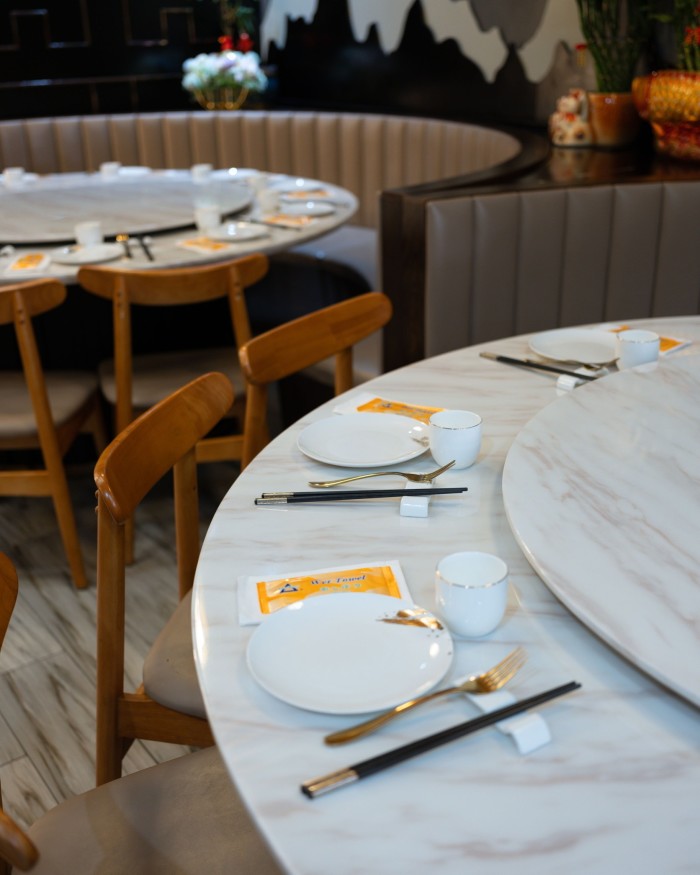
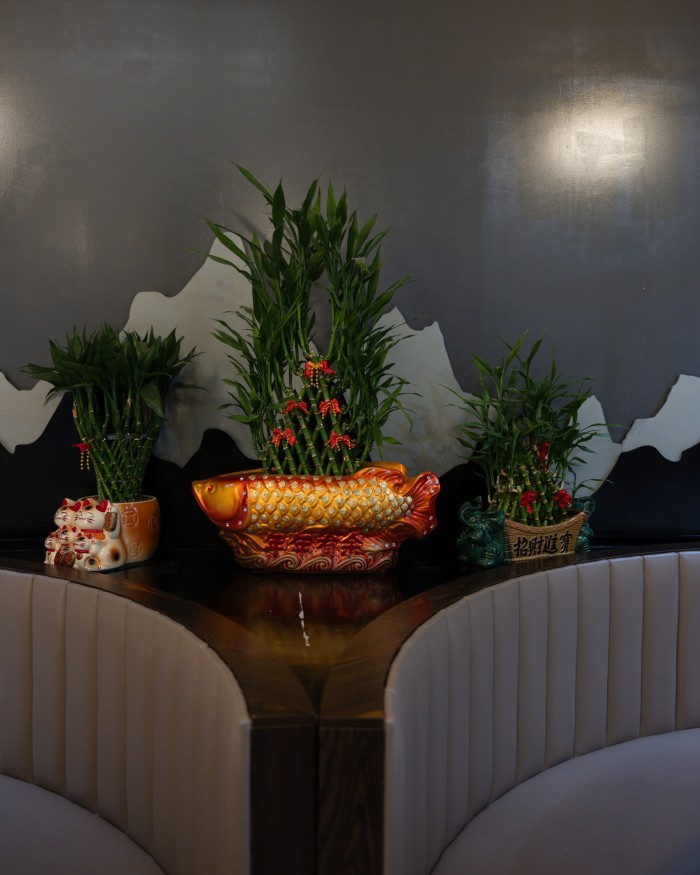
Step into the restaurant and it clearly isn’t trendy or traditional. It’s somewhere in between: bright white lights, circular leather booths, big groups gathered around lazy Susans, marble floors and two full storeys, with public tables and private rooms.
“Hakka are everywhere,” owner Wade Li tells me over dinner. “But I asked people, why don’t we have Hakka restaurants?” Many western Chinese restaurants have one or two Hakka dishes on their menus. But Li wanted a place that would spotlight the cuisine and support Manhattan’s Chinatown. He sold the three adult daycares that he owned and started this restaurant. They opened in September 2022, found a Hakka chef and began receiving rave reviews.
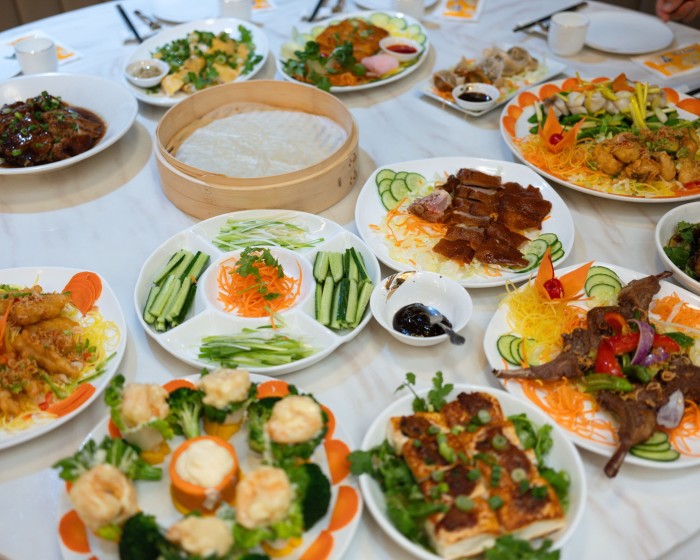
The food itself is rich and delicious, and the presentation endearing. Its whole grey sole fish, served two ways, comes out with a cucumber and carrot wall separating the styles: on one side, fried with chillies, on the warring side, sautéed over snow peas. The crispy fried squid is surrounded by a retro Americana garnish of sliced cucumbers and maraschino cherries.
The menu has some traditional Chinese dishes meant to entice big groups: the showstopper is the labour-intensive Blossom chicken, for which they remove a chicken’s skin in one piece, dry it, restuff the skin with minced shrimp and taro, reassemble it and cook. But my favourites are authentic to Hakka: the salt-water chicken, rubbed with salt and steamed; the tender braised pork belly with preserved vegetables, in a star-anise brown sauce; and the stuffed tofu.
“These dishes are not very profitable,” Li tells me. He says good Hakka food, like much Chinese cuisine, is meticulous: the pork belly takes three days and needs quality meat. But he thinks it’s worth it. “It’s meaningful to do business that promotes your culture. Especially because we’re not going back to China. My kids were born here. They look Chinese, but they’re New Yorkers. That’s the reality.” Maintaining quality and keeping portion sizes large means that his profit margins are low , Li says, “but sometimes life isn’t only for money”.
Potluck Club
133 chrystie street, new york, ny 10002
-
Good for: A fun meal with a small group, dinner with an old college friend, brunch
-
Not so good for: Anyone bound to say, “This isn’t authentic.” As co-owner Cory Ng put it: “This restaurant is like explaining Travis Scott to my mom”
-
Prices: Dishes, $14–$40
-
Opening times: Wednesday–Sunday, 5.30pm–9.15pm; brunch, Saturday–Sunday, 11am–2pm. If you don’t have a reservation, drop in early
-
FYI: The beer list is fun, full of imported east Asian beers such as Sichuan green peppercorn Pilsner and Hong Kong imported beers
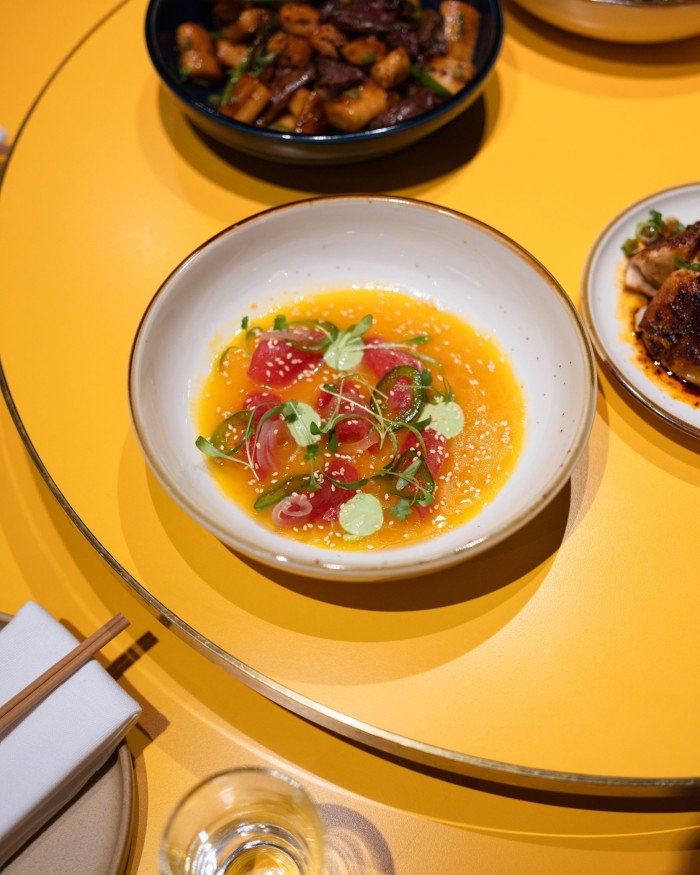
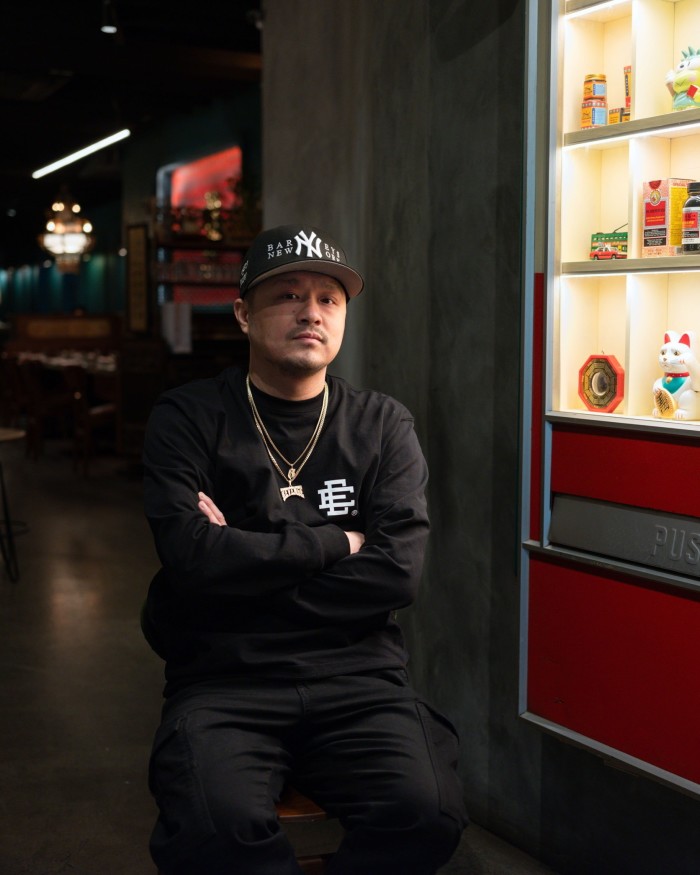
Walking into Potluck Club is like walking into a comic book. Every design choice is a homage: to Chinese restaurants of yore, to Chinese movie theatres in New York that have since closed and to old Hong Kong and Taiwanese films. An image of two badass babies wearing headphones and sunglasses, from a 1990s kung fu film, is screen-printed on the main wall.
Potluck Club was opened in 2022 by a group of five childhood friends who grew up in and around Chinatown. Their goal is to keep Chinatown alive, and never has the work of preservation felt quite so fun. The waitress brings out a salad that I still crave: piles of endives made sweet and acidic with chunks of dragonfruit and cara cara orange, topped with pistachios. The tuna crudo sits in a neon-yellow vinaigrette of lime and ajai peppers. Their upgraded classics delight: juicy pork and chive pot-sticker dumplings smothered in homemade chilli crisp; piles of pea shoots; pillowy stir-fried rice rolls with oyster mushrooms, perfectly charred.
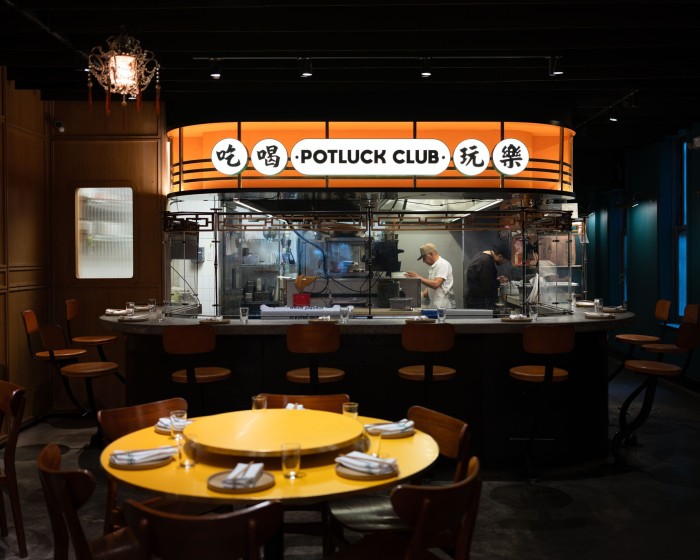
Halfway through the meal, co-owner Cory Ng stops by the table. We get so riled up talking about the changing face of Chinatown that he stays for nearly an hour. “This is Cantonese American,” he says as my boyfriend and I bite into salt and pepper fried chicken, dip it in plum jelly and tear at scallion biscuits. “We’re not from Hong Kong. We’re not from China. We were born here.” He says he grew up on kung fu flicks, but also Biggie Smalls, Dipset and Jay-Z. “That’s who we are.” That chicken, he says, is the most American thing you can eat, but the chef does it with Chinese flavours. The rice rolls are a variation on beef chow fun, but using rolls instead of flat noodles, chopped to feel more like a gnocchi.
Most importantly, the ingredients are mostly sourced from elders in the surrounding blocks. “You’re raving about the pea shoots? The rice rolls? Where do you think we get them from?”
Their parents, he says, don’t really understand the concept. But New Yorkers can’t get enough. Potluck Club is always packed, and its new sibling restaurant, Phoenix Palace, opens soon.
Bonnie’s
398 Manhattan Avenue, Brooklyn, NY 11211
-
Good for: Sitting at the bar with a date, Williamsburg-people watching, feeling young again
-
Not so good for: A budget (the small sharing plates add up), people who don’t like “too cool”
-
Opening times: Tuesday–Saturday, 5pm–10pm; Sunday, 4pm–9pm
-
Price range: Dishes, $9–53
-
FYI: It’s often fully booked. Try walking in when it opens. Also, don’t sleep on the cocktails
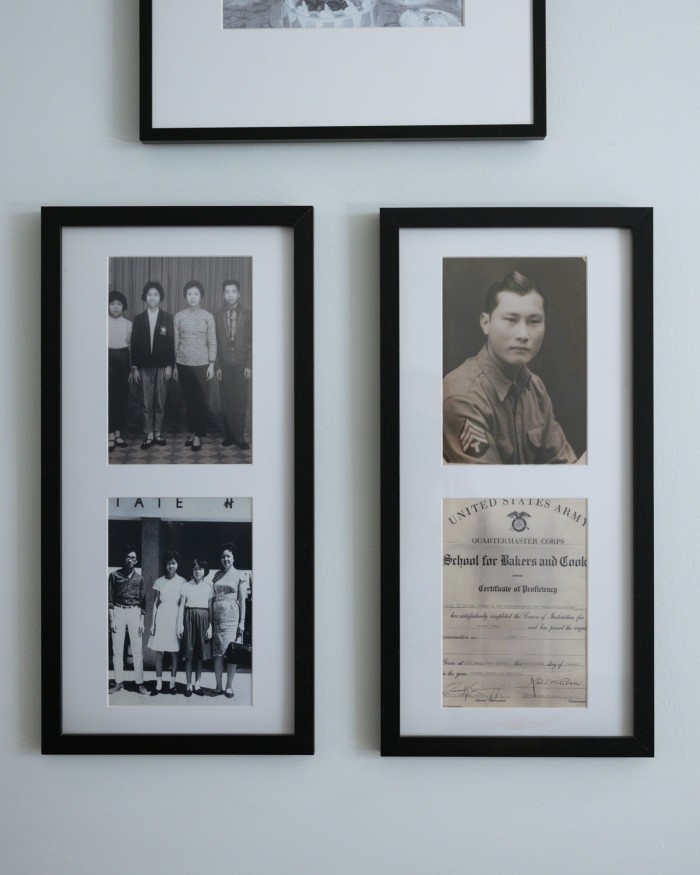
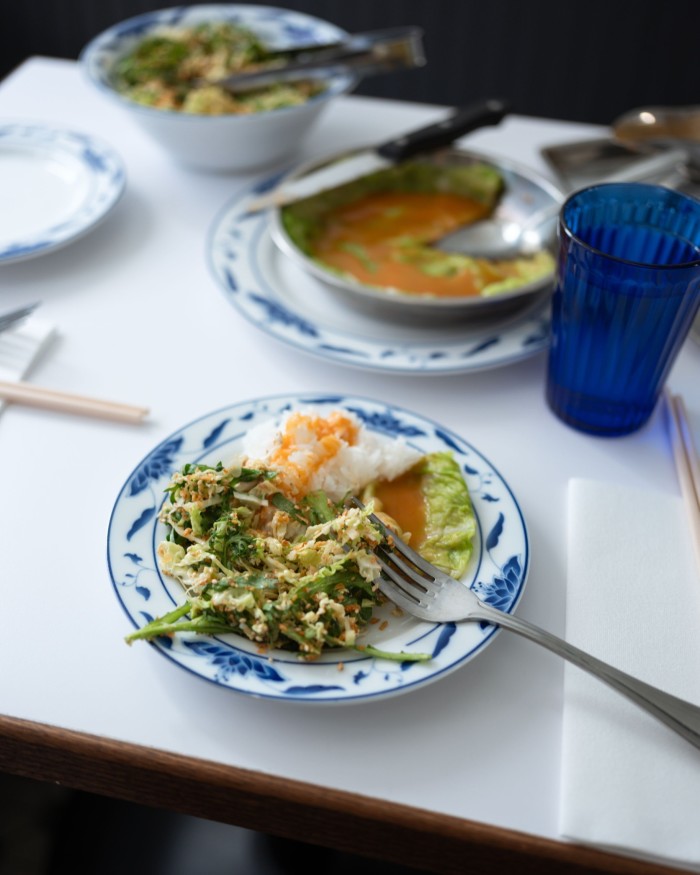
Bonnie’s in Williamsburg may be the sexiest Chinese restaurant in New York. The hip hop is bumping. The bathroom has a strobe effect. The waiters don’t seem to care about you, but actually they do, and they might pour you a house shot made with mezcal, lychee and goji berry and wink- wink at you and your date. It’s decidedly a vibe.
Look closer, though, and you’ll see that family photos line the walls. Bonnie’s was opened in December 2021 by chef and owner Calvin Eng, another first generation New York kid raised in Bay Ridge, Brooklyn, who grew up visiting grandparents in Chinatown, eating fast food and loving his mother’s Cantonese home cooking. Nostalgically, he named his restaurant after her.
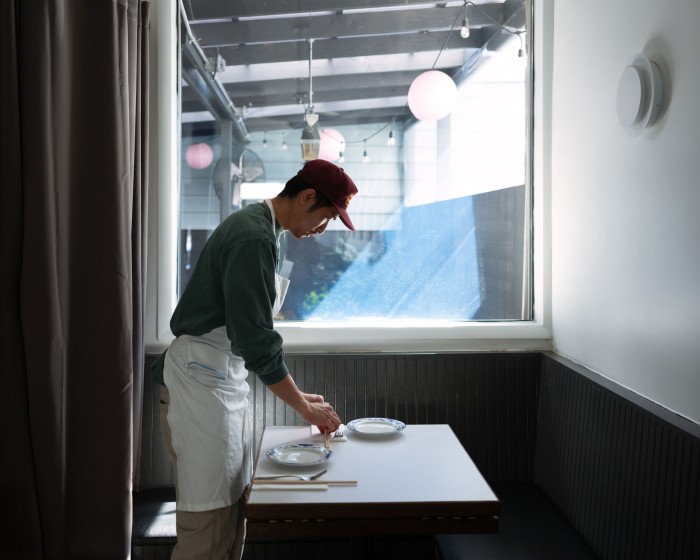
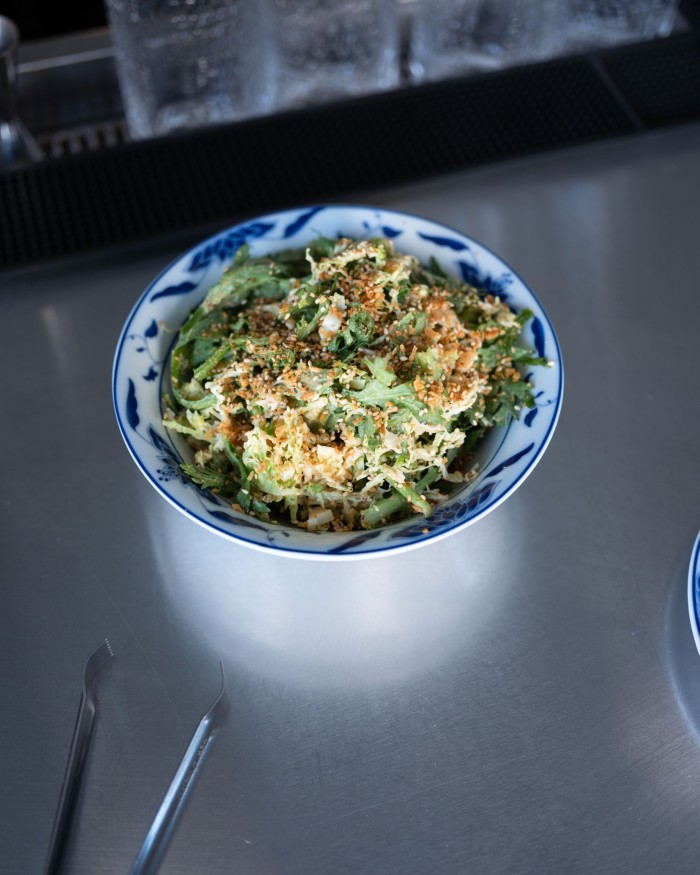
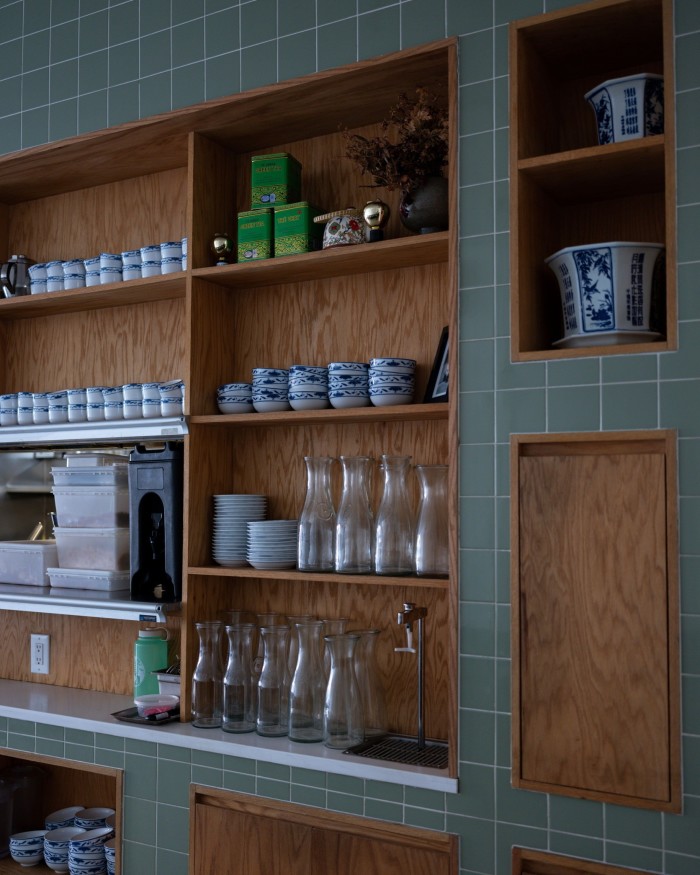
When Eng opened Bonnie’s, his first restaurant, he decided to put a Chinese spin on western classics: his famous char siu BK Rib is a Cantonese barbecue pork riff on the McDonald’s McRib. His cacio e pepe uses fermented black bean curd. And it paid off: in 2022, he was a finalist for the James Beard Award for best emerging chef, and this year he is nominated for Best Chef: New York State.
Bonnie’s also has a Perfect Salad, this one made with chrysanthemum greens, cabbage and soy sesame dressing, full of crunch. It does a brilliant Cantonese take on stuffed cabbage, one big square of steamed minced pork wrapped in bumpy Napa cabbage, with brown shrimp gravy. I find the BK Rib a bit salty (the restaurant seems to have outgrown it), but happily sip its $5 side bowl of chicken broth for fun.
Figure Eight
18 Cornelia Street, New York, NY 10014
-
Good for: A first date, drinks and bites before a comedy show, meeting a colleague, a quiet conversation
-
Not so good for: Flailing around, big groups (it’s tiny) or a restaurant that feels Chinese (on the spectrum of American to Chinese on this list, this one feels the most American)
-
Price range: Dishes, $15–$55
-
Opening times: Sunday–Thursday, 5.30pm–11pm; Friday–Saturday,
5.30pm–midnight; “weekend tea”, Saturday–Sunday, 11am–2.30pm -
FYI: It offers some big, expensive mains to share and a popular seafood tower. But I suggest you get a bunch of small plates and spend that money on the cocktails
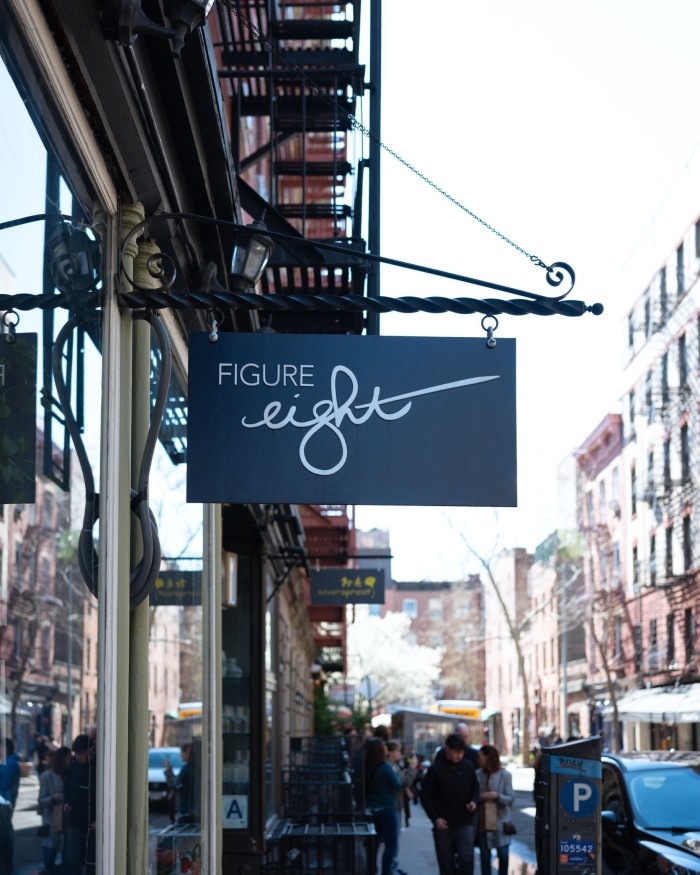
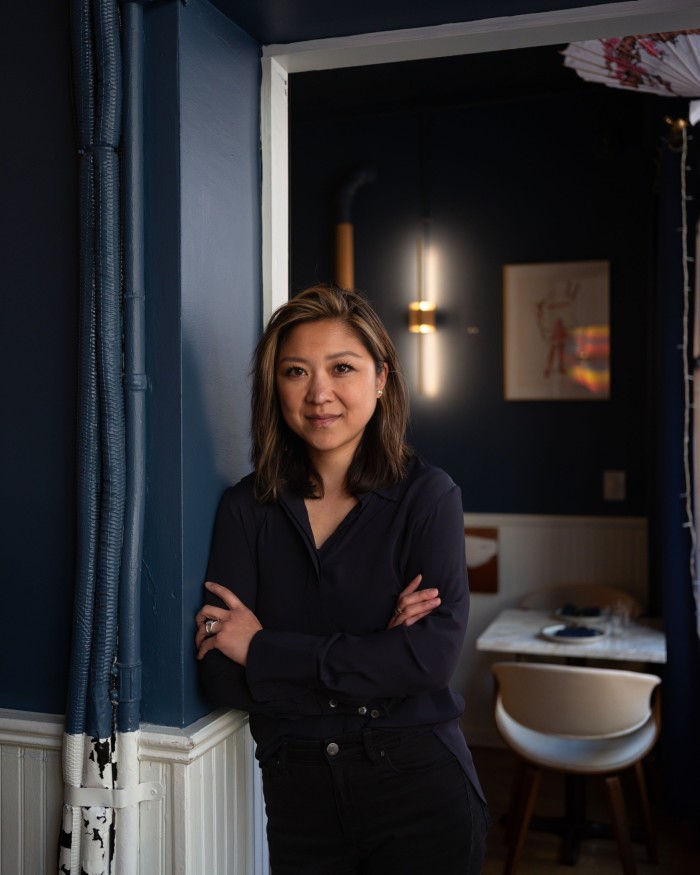
In the West Village, right next door to her Chinese-American restaurant Silver Apricot, owner Emmeline Zhao opened a tiny outpost called Figure Eight last November. It’s an ode to her roots in China and the American South. Zhao grew up in North Carolina and Shanghai, and remembers her parents trying to cook Chinese meals with southern ingredients. Her chef Calvin Hwang has helped bring that vision to life.
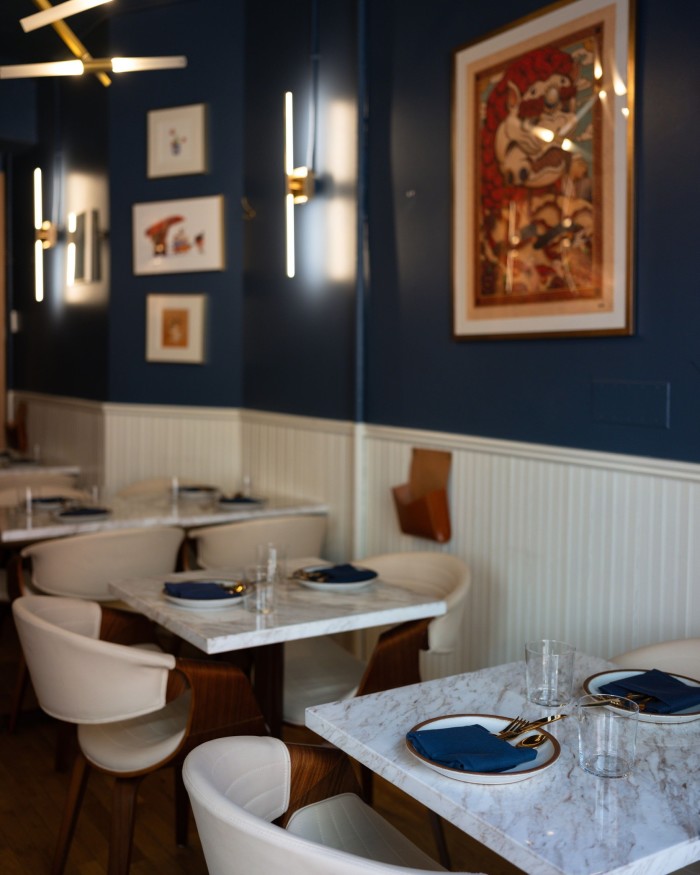
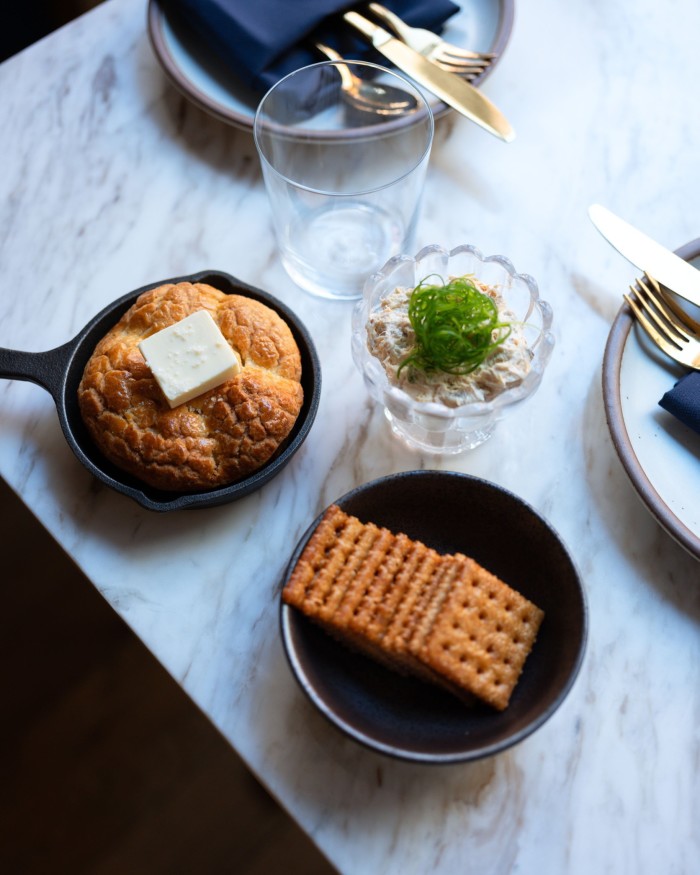
The spot is sleek, cosy and quiet, with tiny marble tables. The small plates, as the kids say, slap (they’re somehow both gorgeous and pack a flavour punch): a smoked whitefish salad comes with golden fried saltines. Crispy long beans coil in on themselves. But may I wax lyrical about a bouquet of pull-apart sweetcorn jalapeño buns? Sweet and crispy on top, soft and steaming inside, smothered in brown butter, these are southern biscuits meets steamed bolo bao meets Betty Crocker pan rolls, and they’re brought to the table in the tiny cast iron they were baked in, and they’re perfect.
Uluh
152A 2nd Avenue, New York, NY 10003
-
Good for: A quick meal for two in the East Village, a big group dinner, over-ordering for leftovers, takeout
-
Not so good for: A leisurely lunch (it can feel a bit fast paced and clubby)
-
Prices: Dim sum, $7–$16, dishes $11–$82. Most expensive dishes are large and slow-cooked
-
Opening times: Sunday–Thursday, 11.30am–10pm; Friday–Saturday, 11.30am–10.30pm. No reservations
-
FYI: It’s technically a teahouse. Come during lunch for tea and dim sum, or order tea with dinner
This hyper-busy, walk-ins-only Sichuan restaurant has a massive menu that looks traditional: scallion pancakes, dan dan noodles, kung pao chicken. But look closer and it’s full of surprises: lychee grilled sea bass, blood tofu in chilli sauce, black truffle pork soup dumplings.
Uluh has been around since 2019. But insiders and sceptics of “modern Chinese food” swear by it with ferocity, and its popularity is so unwavering that it deserves to make this list. Little Uluh, a small second post in the East Village, is now open.
The restaurant is dark and somewhat hectic. The waiters move you through; no chit-chat, no “allergies?”. If your table’s packed with food, they conjure magical extra space. I contacted them a few times for an interview. No one answers the phone. No reservations. It’s great.
Its classic dishes are the platonic ideal: the Shanghai pork soup dumplings look and move like old lady skin and taste juicy and perfect. Don’t miss the minced pork with pickled string beans and noodles (refreshing and spicy, so bright red that it stained my jeans), or the fish in green peppercorn (sea bass swimming in a chilli oil soup): spoon into it and you’ll find cabbage, enoki mushrooms and massive bunches of numbing peppercorn, floating like grapes. The dish was so massive that I worried I’d misread it, and would be paying a hundred bucks. Thrillingly, it was $32.
What’s your favourite Chinese restaurant in New York? Tell us in the comments below. And follow FT Globetrotter on Instagram at @FTGlobetrotter
Lilah Raptopoulos is the host of FT Weekend’s culture podcast, Life and Art
Cities with the FT

FT Globetrotter, our insider guides to some of the world’s greatest cities, offers expert advice on eating and drinking, exercise, art and culture — and much more
Find us in New York, Copenhagen, London, Hong Kong, Tokyo, Paris, Rome, Frankfurt, Singapore, Miami, Toronto, Madrid, Melbourne, Zurich, Milan and Vancouver



